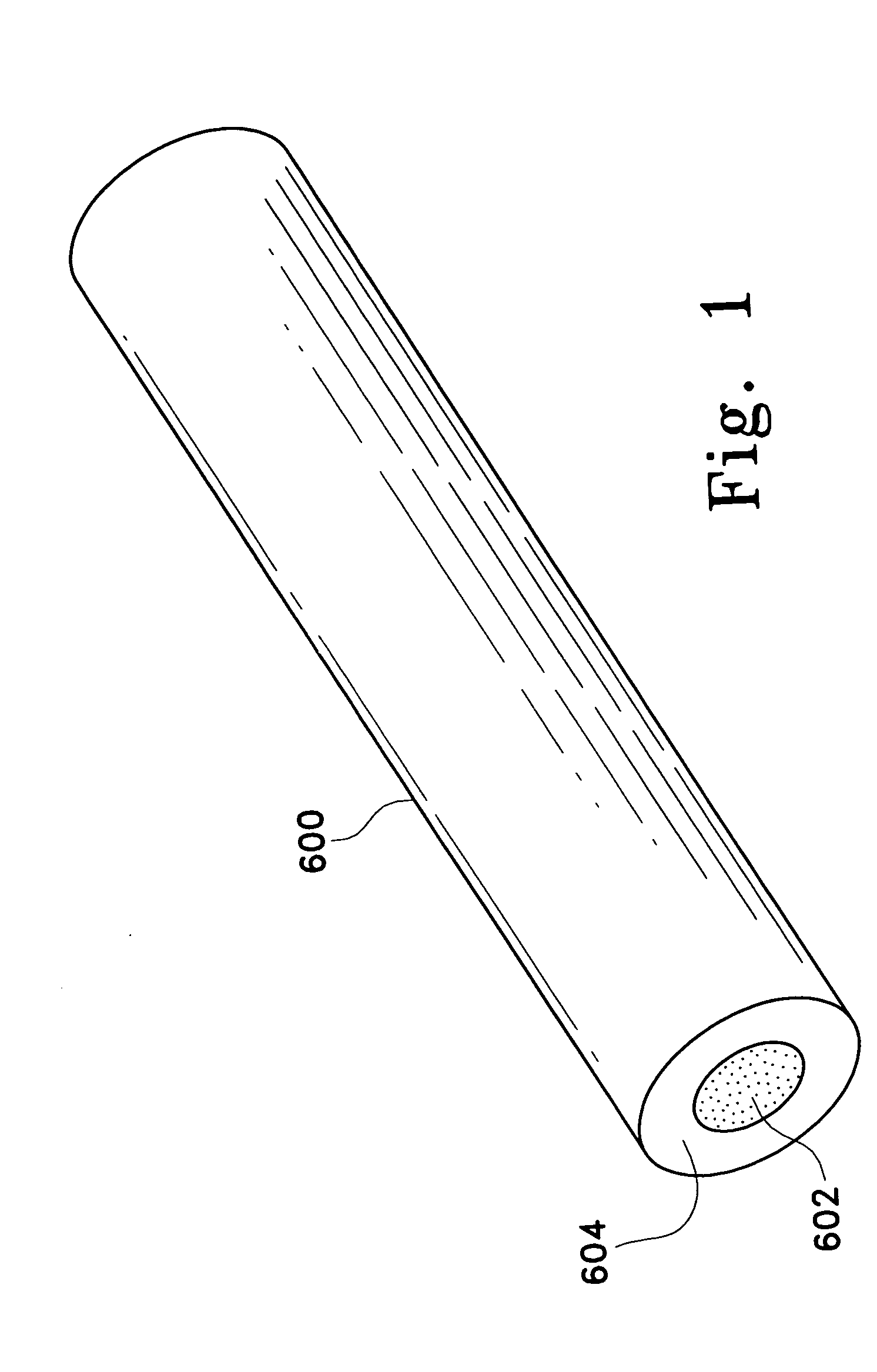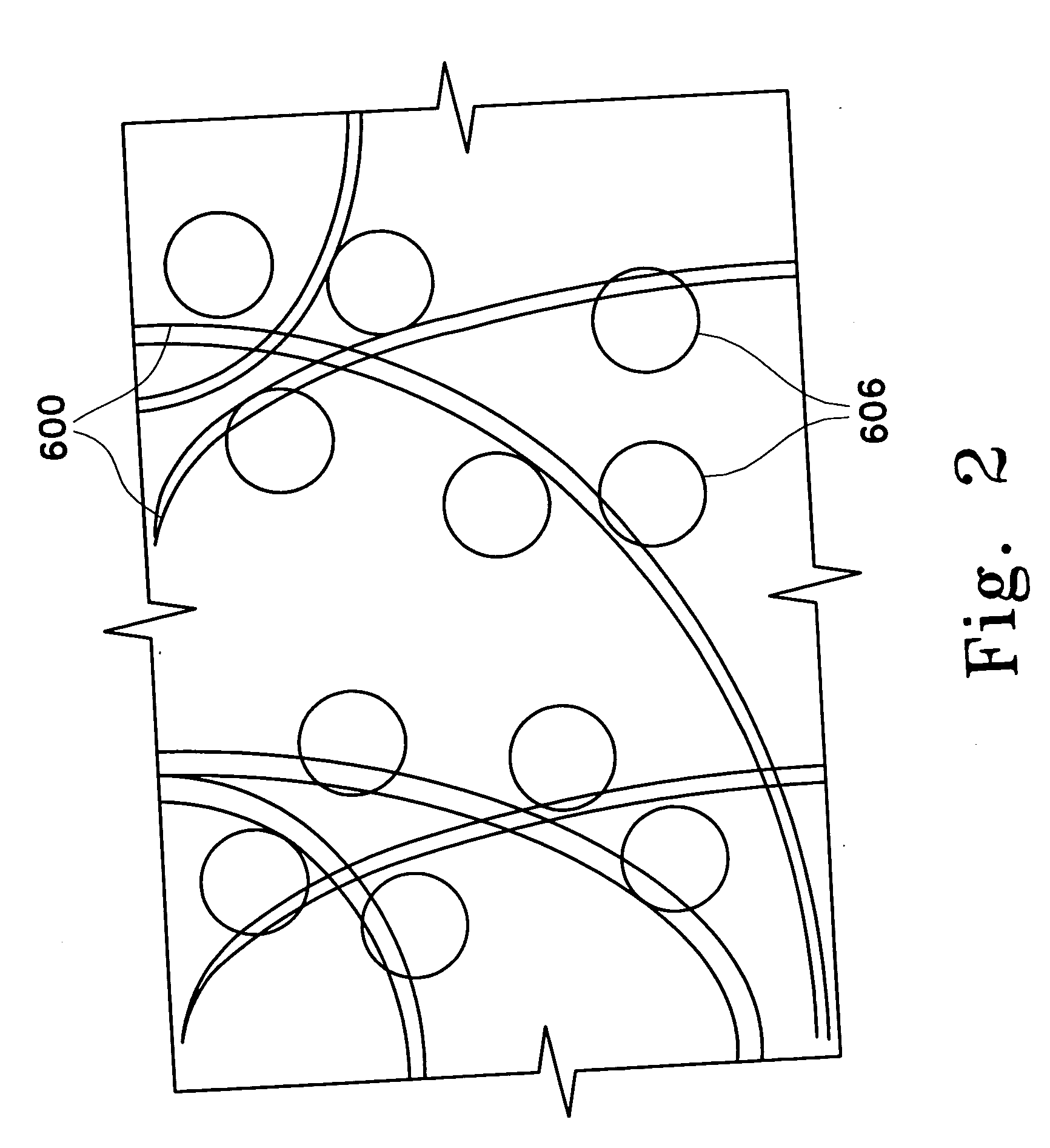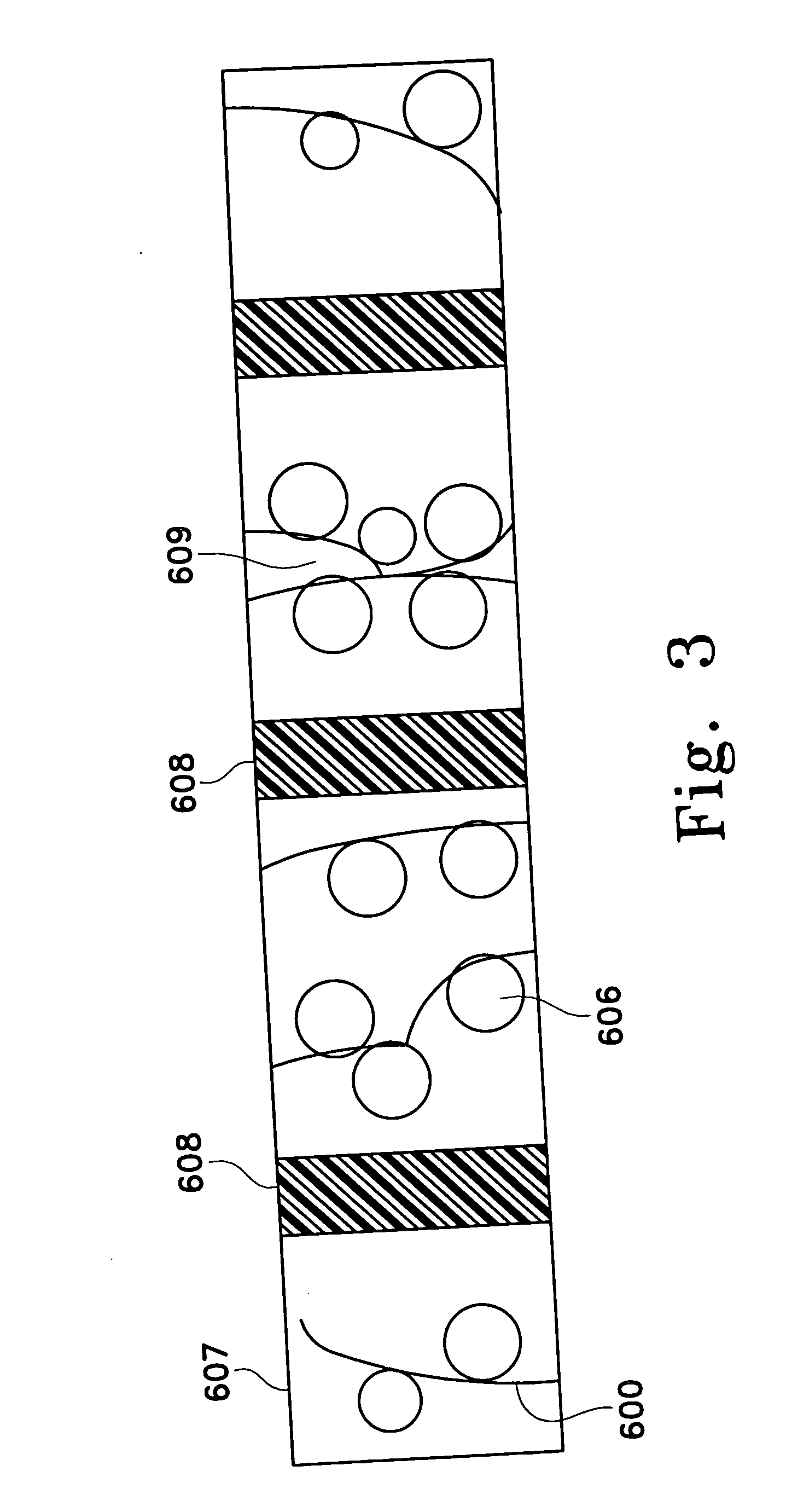Absorbing pathogen-inactivating compounds with porous particles immobilized in a matrix
a technology of porous particles and pathogens, applied in the field of reducing compounds from biological compositions, can solve the problems of complex and expensive dialysis procedures, low molecular weight compound removal, and inability to remove relatively low molecular weight compounds, etc., to reduce the risk, simplify manufacturing, and reduce the effect of problems
- Summary
- Abstract
- Description
- Claims
- Application Information
AI Technical Summary
Benefits of technology
Problems solved by technology
Method used
Image
Examples
example 1
Preparation of Fiberized Resin
Preparation of Fiberized Resin and Adsorbent Beads
[0224] Immobilized adsorbent media containing Amberlite® XAD-16 in a cleaned and hydrated state (Rohm and Haas) was obtained from AQF. The fibers of Hoechst Celanese's fiber network consisted of a polyethylene terephthalate core and a nylon sheath, the sheath having a lower melting temperature than the core. The fiberized resin was prepared by first evenly distributing the adsorbent beads in the fiber network. Next, the fiber network was rapidly heated causing the polymer sheath of the fibers to melt and bond to the adsorbent beads and other fibers, forming a cross-linked fiber network. The fiberized resin formed contained the Amberlite® XAD-16 at a loading of 130 g / m2 (i.e., each square meter of fiber contained 130 g of adsorbent beads).
[0225] The fiberized resin was cut into squares (14 cm×14 cm), and the resulting sections contained approximately 2.5 g of dry Amberlite® XAD-16. The Amberlite® XAD-1...
example 2
Preparation of pHEMA-Coated Adsorbent Beads and Fiberized Resin
[0228] Dowex® XUS-43493 (commercially known as Optipore® L493) containing approximately 50% water by weight was obtained from Dow, and polymerized HEMA with a viscosity average molecular weight of 300 kD was obtained from Scientific Polymer Products. Prior to coating, the adsorbent beads were dried to a water content of <5%. A stock solution of pHEMA was prepared by dissolving the polymer in 95% denatured ethanol / 5% water to achieve a pHEMA concentration of 50 mg / ml.
[0229] The coating process was performed by International Processing Corp. in a 9-inch Wurster fluidized bed coater with a charge of approximately 4 kg (dry) of adsorbent. The coating process involved a pHEMA flow rate of 60-70 g / min, an inlet temperature of 50° C., and an air flow rate of approximately 200 ft3 / min. Samples (50 g) of coated adsorbent were removed during the coating process so that coating levels ranging from 3-18% (w / w) pHEMA were obtained...
example 3
Effect of Glycerol and Polyethylene Glycol on Adsorbent Capacity
[0232] This example examines the effect of glycerol and polyethylene glycol as stabilizing agents on adsorbent capacity and kinetics of removal of aminopsoralens from plasma. Free (i.e., not fiberized) Amberlite® XAD-16 and Dowex® XUS-43493 adsorbent beads were used in the experiments of this example.
Methodology
[0233] Amberlite® XAD-16 HP (Rohm & Haas (Philadelphia, Pa.)) and Dowex® XUS-43493 (Supelco, Bellefonte, Pa.) were dried to 120° C. was avoided since changes in adsorbent properties (e.g., pore melting) were previously observed at higher temperatures. After drying, adsorbent samples were weighed to determine the mass of stabilizing agent per mass of adsorbent.
[0234] Several individual studies were performed. Control samples of “non-wet” adsorbent and “optimally wet” adsorbent were included in the studies as described below. The non-wet samples of adsorbent were dried adsorbent which was not subjected to any p...
PUM
| Property | Measurement | Unit |
|---|---|---|
| Fraction | aaaaa | aaaaa |
| Fraction | aaaaa | aaaaa |
| Fraction | aaaaa | aaaaa |
Abstract
Description
Claims
Application Information
 Login to View More
Login to View More - R&D
- Intellectual Property
- Life Sciences
- Materials
- Tech Scout
- Unparalleled Data Quality
- Higher Quality Content
- 60% Fewer Hallucinations
Browse by: Latest US Patents, China's latest patents, Technical Efficacy Thesaurus, Application Domain, Technology Topic, Popular Technical Reports.
© 2025 PatSnap. All rights reserved.Legal|Privacy policy|Modern Slavery Act Transparency Statement|Sitemap|About US| Contact US: help@patsnap.com



